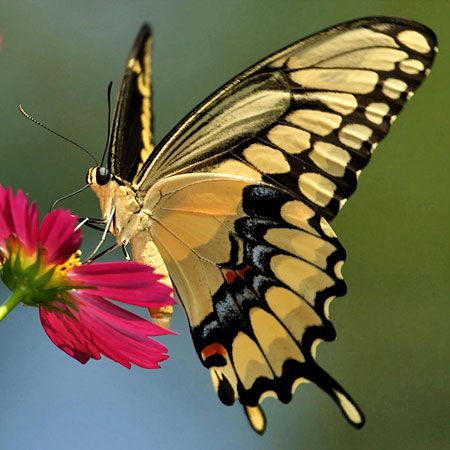
Butterflies are not just beautiful insects fluttering around in gardens and fields; they play a crucial role in our ecosystem. For students learning biology, butterflies provide a perfect example of life cycles, adaptation, and evolution. But why are these delicate creatures so significant in the world of biological research? Studying butterflies in biology lessons isn’t just about watching their colorful wings in flight; it’s about understanding how nature works at its most intricate levels. Let’s dive into why butterfly research is so important and how it can transform the way students experience biology.
The Importance of Butterfly Research and the Role of Technological Tools
Butterfly research opens a window into the complex world of biology. It helps students understand ecological relationships, genetic variations, and species interactions. However, conducting research on these delicate insects isn’t always easy. This is where modern technological tools come into play, making the process of studying butterflies more efficient and engaging.
Tech can help scientists who study butterflies find new species, keep an eye on flight patterns, and look at weather information. Students no longer have to read books to study. Instead, they can use digital apps and tools to see data in real time and study all the time. These tools help you study more easily and get you to learn by doing.
Enhancing Research with Modern Technology
Modern technology has revolutionized how we approach butterfly research. From mobile apps that help identify butterfly species to digital cameras that capture high-resolution images, students have more resources than ever to deepen their understanding of these fascinating creatures. In the middle of your butterfly research journey, you might find a website that writes essays for you, assisting in compiling reports, organizing data, and even helping articulate your findings more effectively. By integrating these tools, students can focus on what matters most—learning and making scientific discoveries—while also gaining valuable skills in digital literacy.
Why Butterflies Are Important to Ecosystems
Butterflies play a vital role in maintaining the health of our ecosystems. They act as pollinators, helping plants reproduce by transferring pollen from one flower to another. This pollination process is crucial for the survival of many plant species, which, in turn, supports entire food chains. Without butterflies, our gardens, forests, and even crops would suffer significantly.
In addition to being pollinators, butterflies are important bioindicators. This means that their presence or absence can indicate the health of an environment. A decline in butterfly populations can be a warning sign of larger ecological problems, such as pollution or habitat loss, which is why their study is so crucial in understanding environmental changes.
Learning Biology Through Butterfly Research
Biology students can learn about basic biological processes in a fun and useful way by studying butterflies. Seeing their life cycle—from egg to caterpillar to chrysalis to adult butterfly—is a great way to understand transformation in a real-life setting. The process of change described in this guide is not just an idea; students can see it happen in real time.
Butterfly research also connects students to broader biological concepts, like genetics and evolution. By studying different species, students learn how butterflies adapt to their environments, which leads to a deeper understanding of natural selection and genetic diversity. This kind of learning goes beyond memorization, encouraging critical thinking and curiosity about the natural world.
Hands-On Learning and Scientific Methods
Butterfly study helps apply science beyond the classroom. It encourages students to observe, gather, and analyze data using scientific procedures. This hands-on method improves biology knowledge, research, and analysis. These exercises help students build a love of science by showing them how their work leads to real-world discoveries.
The Role of Butterfly Conservation in Biology Education
Loss of territory and climate change are putting many butterfly species in danger, so protecting them is very important. Protecting butterflies helps kids understand how their actions can change the world around them. It also stresses protecting natural environments and species that are in danger. Biology lessons that teach students about butterfly protection teach them to think widely and act locally. It makes people want to join programs that collect data and watch butterflies as part of citizen science. When students work on these projects, they learn about science and how to care for the world.
Promoting Environmental Stewardship Among Students
Studying butterfly conservation can motivate students to become environmental stewards. By understanding the challenges butterflies face, students are encouraged to take action in their communities. Real-world examples include organizing awareness campaigns, creating butterfly gardens, or advocating for reduced pesticide use. These activities help students realize that they have the power to make a positive impact on the environment.
Challenges and Future Directions in Butterfly Research
Butterfly study is challenging yet rewarding. Researching these creatures may be difficult due to a lack of resources, awareness, and habitat. But scientific progress requires overcoming these hurdles. Butterfly research will use innovative student involvement and conservation strategies. We need new technology, citizen science, and butterfly education tools. Pushing these limitations will ensure future generations study these amazing species.
Conclusion
It’s cool and fun to learn about living things by studying butterflies. It’s fun and useful to study butterflies because it helps the environment and teaches us about the different stages of their lives. As students use technology, learn by doing, and take care of the world, they can learn about both science and the environment. When you see a butterfly, remember that it’s not just a bug. It lets you enjoy the lovely things in nature.




